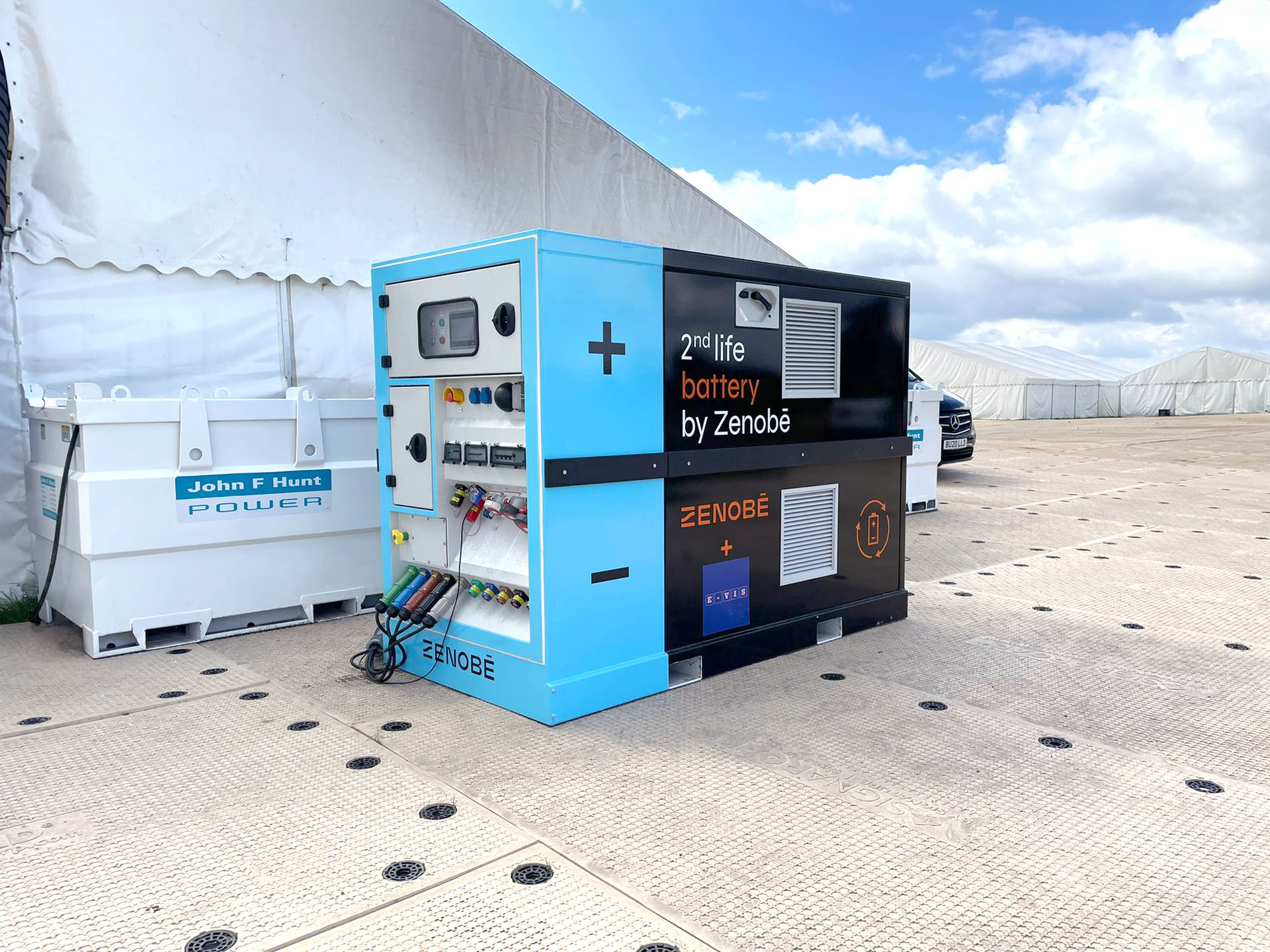Powering sustainable film production on the set of Fast & Furious X
Supporting sustainable filming across the UK
The United Kingdom is an increasingly popular place for location filming, with a record £6.27 billion spent on film and TV production in the UK in 20221. During that year filming took place for ’Fast X’, the latest instalment in the ’The Fast and Furious’ franchise.
Filming in more remote locations presents challenges maintaining reliable power to set, without resorting to full-time diesel-powered generators. For shooting at Bovingdon Airfield, one of Zenobe’s Powerskids was used in two different scenarios, providing power for backup services.
As a result, the production team on Fast X not only benefited from reliable power, but increased efficiency, lowered costs and emissions too.

01.
The Challenge
Film making uses a lot of power, not just for cameras and lights, but behind the scenes for all sorts of supporting activities.
Many of these activities use small amounts of power for long periods, with occasional bursts of high demand, for example during lunch breaks or hair and make-up sessions. Using diesel generators in these circumstances means long running times with high emissions. It also causes buildups of soot and unburned fuel, damaging generators and shortening their lives.
The film industry is just as interested as any other sector in being more sustainable, more energy efficient and reducing its pollution. The search was on for a source of power that was portable, could cope with fluctuating power demands, and be kinder to the planet.
02.
The Solution
Zenobē partnered with E-vis Energy, a provider of clean energy solutions to the screen production industry, to run a 100kW Powerskid to sit alongside a diesel generator.
The Powerskid contains an array of refurbished electric vehicles batteries that are charged by the generator. When the Powerskid is fully charged, the generator turns off, unless there is a spike in demand. When that happens, the generator can kick in again to provide extra power.
This combination means:
- The generator only runs when necessary, so fuel use, emissions and noise are severely cut down.
- The generator isn’t run at constant low loads, so the associated damage and high emissions are avoided.
At the ‘Fast X’ shoot the Powerskid was used in two different phases.
Phase 1
In the first phase the film crew used the Powerskid to charge their electric vehicles and to familiarise them with the setup.
Over five days, compared with running a diesel generator full time, 174 litres of diesel were saved. This avoided 452kg of CO2 from being released into the atmosphere.
Phase 2
In the second phase the Powerskid was paired with a 100kVA generator with an automatic switchover. This meant that when the Powerskid needed charging, or there was a surge in demand, the generator kicked in straightaway, without the crew needing to do anything. This also protected the diesel generator from the damage caused by low load running.
The hybrid system powered the marquee used for hair and other preparation for around 120 cast members.
Over a week, compared with running a diesel generator full time, 377 litres of diesel were saved, avoiding 980kg of CO2 emissions.
In numbers
of diesel saved
of CO2 emissions avoided
03.
Key Results
Lower operating costs
Using a Powerskid means less reliance on diesel in remote locations, saving 551 litres of diesel resulting in lower fuel costs.
Environmental benefits
Less use of diesel generators means lower CO2 emissions and less noise.
A secondary ecological benefit comes from the Powerskid’s use of refurbished batteries. When electric vehicle batteries are no longer suitable for use in vehicles, they are utilised in the Powerskids, giving them a ’second-life’.
Flexibility
Powerskids are easy to use. They can be paired with a diesel generator that kicks in either manually or automatically for charging or to boost power.
Powerskids are portable. They can be driven onto sites and lifted off into position, great for remote locations with no electrical supply. They can also recharge from the grid if a power connection is available.
04.
Working with Zenobē
“We were excited to introduce Zenobē’s Powerskid into the film industry and demonstrate its capabilities on one of the longest running global franchises. Traditionally the film industry relies heavily on diesel generator power for location work and by bringing a 160Kwh battery to the set of Fast & Furious X, we were breaking new ground by providing a low emission power source.
By saving nearly 1.5 tonnes of CO2 emissions across the project, we proved the capabilities of the Powerskid and helped reduce the production’s environmental impact, which went on to win them a Gold Seal from the Environmental Media Association for sustainable production.” – Dom Aronin, E-Vis Energy
